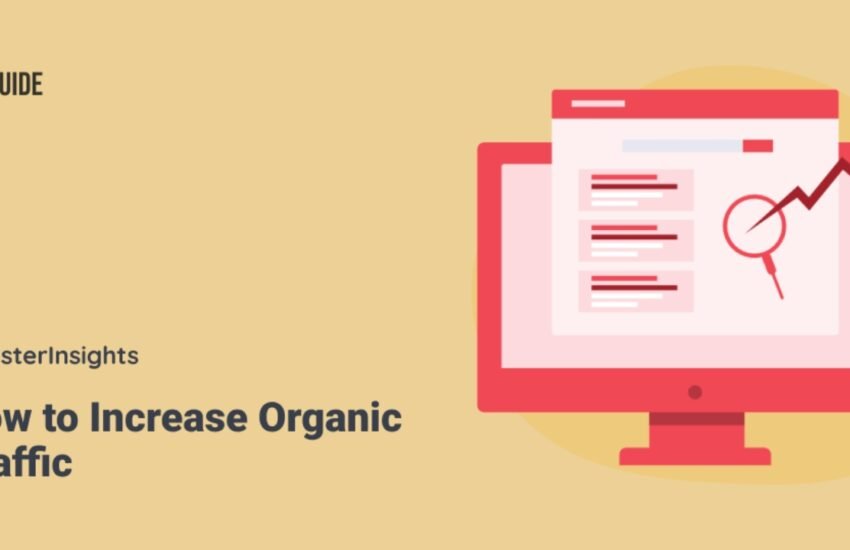In the world of SEO, understanding organic search impressions is crucial for evaluating how your website is performing in search engine results. Organic search impressions measure how often your website appears in search results as users seek relevant information. This metric gives you insight into your reach and visibility on the web without the need for paid promotion. Tracking and improving these impressions can significantly impact your overall SEO strategy, helping you enhance your site’s ranking, click-through rate (CTR), and ultimately, traffic.
In this article, we will discuss what organic search impressions are, why they matter, and how you can track and improve them to boost your SEO efforts.
What Are Organic Search Impressions?
Organic search impressions refer to the number of times your website appears in search engine results pages (SERPs) or on platforms like Google Discover and News Feeds. Google counts an impression each time your page is displayed in the search results, even if the user doesn’t fully see it. This is particularly important in environments with infinite scrolling or carousels, as impressions are counted when the content becomes visible or clicked on.
For instance, if someone searches for “best running shoes,” and your page appears within the search results, that counts as one impression, even if the user doesn’t click on the link. Tracking organic search impressions helps you understand how often users are seeing your website, which is the first step in building organic traffic.
How Impressions Impact SEO Performance
While organic search impressions measure how many times your page appears in search results, reach refers to the number of unique users who have seen your content. It’s essential to differentiate between the two because reach gives you a sense of how many distinct people are exposed to your content, whereas impressions account for the total number of times your page was viewed—regardless of whether it was by the same person.
Impressions vs. Clicks: How Engagement Matters
Impressions alone don’t guarantee success. The next key metric to track is click-through rate (CTR), which compares the number of impressions to the number of clicks your page receives. For example, a high number of impressions but a low CTR might indicate that although your page is visible, it isn’t compelling enough for users to click on.
CTR = (Clicks / Impressions) x 100
A high CTR suggests that your content is relevant and engaging to users. For instance, a page ranking in the first position for a high-volume search term could have a high CTR if it meets the users’ search intent and encourages clicks. Tracking and improving CTR alongside impressions helps ensure that your organic search efforts are fruitful and drive actual traffic to your site.
How to Track Organic Search Impressions
One of the best tools to track organic search impressions is Google Search Console (GSC). This free tool provides valuable insights into how your content is performing in search results. You can use GSC to track impressions, clicks, search queries, and average rankings for each page. By monitoring this data regularly, you can assess how well your SEO efforts are working and adjust accordingly.
In GSC, you can review:
- Impressions: The total number of times your page appeared in the search results.
- Clicks: How many times users clicked on your page.
- CTR: The ratio of clicks to impressions.
- Average Position: The ranking of your page for a particular query.
By analyzing these metrics, you can identify pages that are underperforming and focus on improving their visibility or relevance.
How to Improve Organic Search Impressions
1. Regularly Update Your Content
Refreshing your content on a regular basis helps signal to Google that your page is current and relevant. Content that is updated frequently has a better chance of being re-crawled and ranked higher in search results, which can lead to more organic search impressions.
For example, if you run a blog about digital marketing, updating your posts with new statistics, insights, or trends ensures that your content stays valuable to both users and search engines.
2. Focus on Internal Linking
Internal linking is another powerful tactic to track and improve your organic search impressions. By linking to other pages within your website, you can help search engines discover more of your content, boosting the overall visibility of your site.
For instance, if a high-authority page on your website links to a lower-ranking page, this can pass some of the ranking power from the authoritative page to the linked one. This strategy helps increase impressions for those lower-performing pages.
Diagnosing Issues with Organic Impressions
Tracking organic search impressions can reveal a lot about your SEO performance. Here are some common scenarios you may encounter:
1. Low Impressions: What’s Going Wrong?
If you notice that your pages are getting low impressions, this could indicate that your content is not indexed, isn’t ranking for relevant keywords, or isn’t competitive in the search results. It’s important to review the keywords you’re targeting and ensure that your content aligns with user intent.
2. High Impressions with Low Clicks: A Missed Opportunity?
If you have high impressions but low clicks, this might indicate that your content isn’t compelling enough, or it could be appearing for irrelevant search queries. This is a clear signal that your content might need optimization. Rewriting your meta description, improving headlines, or optimizing for featured snippets can help address this.
3. Sudden Spike or Drop in Impressions: What Does It Mean?
A sudden change in impressions might be a result of algorithm updates, competitor behavior, or a shift in search trends. By closely monitoring changes, you can adjust your SEO strategy and ensure your content remains relevant.
Seasonal Patterns and Organic Impressions
Organic search impressions also follow seasonal trends. For example, a travel website might experience a surge in impressions for vacation-related queries during the summer, only to see a decline during the off-season. Tracking these fluctuations can help you plan content and optimize it for peak times.
Common Misconceptions About Organic Impressions
1. High Impressions Equals Success
Many people believe that a high number of impressions automatically equates to SEO success, but this isn’t always the case. If your page is appearing for irrelevant or low-value queries, it’s not contributing to your business goals. High impressions without clicks often point to a content mismatch or misaligned search intent.
2. Low Impressions Mean Failure
Low impressions do not always indicate failure, especially if you’re targeting long-tail keywords. These keywords typically have lower search volumes but often lead to higher conversion rates because they are more specific and relevant to users. Therefore, a page with fewer impressions but higher conversions could be more successful than one with many impressions but low engagement.
Conclusion: The Importance of Tracking and Improving Organic Impressions
Organic search impressions are a powerful metric for understanding how visible your content is in search results. They provide insights into your content’s reach, relevance, and engagement potential. By regularly tracking impressions using tools like Google Search Console, updating content, focusing on internal linking, and optimizing for seasonal trends, you can significantly improve your SEO performance.
Ultimately, tracking and improving organic search impressions is not just about increasing visibility; it’s about aligning your content with user intent and ensuring that your website attracts valuable traffic. Keep monitoring your impressions and make data-driven decisions to optimize your SEO strategy and grow your online presence.
you may also like
How Long to Get to Work? Google SEO Changes Explained



